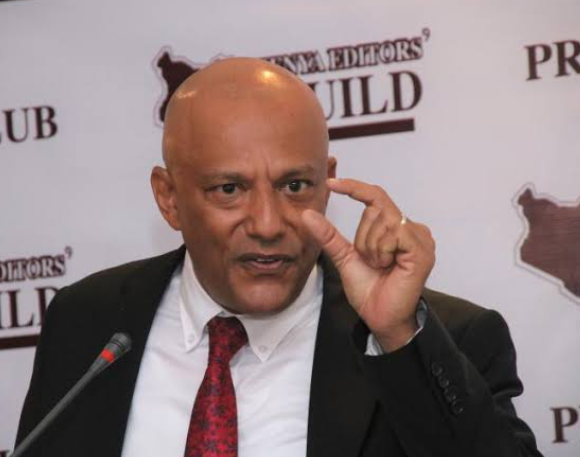The Ethics and Anti-Corruption Commission (EACC) has recently found itself in hot water over the dissemination of misleading claims concerning graft suspects on social media.
In a notable instance, a graphic circulated online in January 2024 that falsely reported a raid on the home of James Orengo, the governor of Siaya County.
The image, which carried the EACC’s logo, falsely claimed that Orengo’s residence had been raided as part of an anti-graft operation.
The EACC was quick to respond by posting the image on its official X account with a “FAKE” stamp to discredit the claim.
This event has raised concerns about the EACC’s public relations strategies, particularly the use of social media to communicate sensitive information regarding ongoing investigations.
In an age where misinformation can spread rapidly online, government institutions such as the EACC are under pressure to ensure the accuracy of their communications.
Failing to do so can undermine public trust in their operations and, in cases like these, may even cast doubt on the legitimacy of the commission’s anti-corruption efforts.
The stakes are particularly high given the EACC’s critical role in fighting corruption in Kenya.
Over the years, the commission has been at the forefront of numerous high-profile investigations, including a recent case in Isiolo County, where senior officials were arrested in connection with a KSh 58 million procurement fraud.
These operations are part of a broader push to crack down on the misuse of public funds in counties across Kenya, with the EACC playing a key role in uncovering graft and holding public officials accountable.
However, instances of misinformation, even if inadvertently spread, can be damaging.
In the case of Governor Orengo, the false claim of a raid came at a sensitive time when the EACC had just launched an investigation into the misappropriation of over KSh 400 million in Siaya County.
The commission’s failure to control the narrative from the outset allowed false information to circulate widely before it was debunked, potentially leading to public confusion and mistrust.
This incident highlights the importance of responsible communication, especially when dealing with public figures and sensitive allegations.
The EACC, as a body tasked with ensuring transparency and integrity in public service, must take extra precautions to ensure that its messages are clear, accurate, and timely.
Misleading information not only hampers the fight against corruption but also tarnishes the image of institutions that are supposed to lead the charge for accountability and ethical governance.
Moreover, the episode poses the need for the EACC to adopt a more robust social media strategy.
With growing public reliance on platforms like X and Facebook for news, the potential for misinformation to go viral is greater than ever.
The EACC must therefore ensure that its official channels are used responsibly to convey only verified information.
This might involve setting up rapid-response teams to tackle any false claims or ensuring that its posts undergo rigorous fact-checking before being published.
While the EACC continues to play an essential role in Kenya’s anti-corruption efforts, the recent incident involving misleading social media claims shows that even well-intentioned institutions can inadvertently cause harm if they are not careful with how they communicate.
The EACC will need to refine its public relations strategies to avoid such issues and maintain public confidence in its work.





















Add Comment